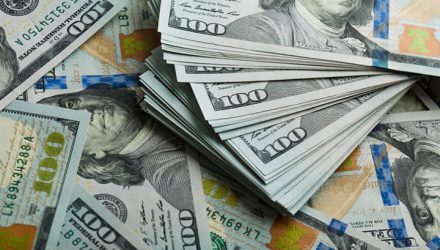It isn’t uncommon for the exchange rate to remain over or undervalued for a long period of time.
However, we eventually do see a reversal from extreme levels. Usually, there is a catalyst that brings an adjustment to valuation. In 1985, it was the Plaza Accord which was specifically designed to weaken the dollar. The end of the second bull market was likely due to the end of the tech bubble in equities and the Bush tax cuts, which reduced the fiscal surplus.
It appears we are seeing two catalysts that may be signaling the end of this dollar bull market.
The reversal of monetary policy: The dollar initially rallied on the divergence of monetary policy. The Federal Reserve was ending QE and beginning to raise rates, while the Bank of Japan (BOJ) was expanding QE and the European Central Bank (ECB) was implementing QE and experimenting with negative interest rates.
This kicked off the current dollar bull market that began in mid-2014. Although the FOMC is planning to raise rates further that action has been well telegraphed. At the same time, it appears the ECB is poised to raise rates and end its QE program.
And, European economic growth has been strengthening, which will likely accelerate policy tightening. Even the BOJ is considering easing some of its support. Given the degree of dollar overvaluation, foreign policy tightening will likely weaken the dollar in the coming months.
Political turmoil is favoring foreign currencies: There is no lack of political turmoil in the developed countries. We have had two major elections in Europe thus far, with upcoming German elections in the fall and Italian elections expected in February. Brexit continues to roil Europe. Tensions are rising in the Far East as North Korea continues to test missiles and threaten its neighbors.
When President Trump won the election in November, the dollar rose on expectations of trade restrictions, tax reform that would support repatriation and infrastructure spending which would boost growth. As the Trump administration has gotten sidetracked on other issues, these expectations have dwindled. Even though political risk remains high throughout the developed markets, the high dollar valuation and disappointment surrounding the president’s policies appear to be undermining the dollar.
If the dollar’s bull market is coming to a close, what can we expect? First, it gives a tailwind to foreign investment. Emerging markets, which have been strong this year, would likely receive further support if the dollar begins to weaken. Second, commodities would benefit. For example, our oil inventory/EUR model for oil prices indicates that a €1.30 would generate a fair value for oil near $78 per barrel, even with the current elevated level of inventories. Gold prices are traditionally supported by dollar weakness as well. The asset allocation committee will be weighing the likelihood of dollar weakness and take appropriate measures in the coming months.
This article is courtesy of Confluence Investment Management, a participant in the ETF Strategist Channel.
Disclosure Information
Past performance is no guarantee of future results. Information provided in this report is for educational and illustrative purposes only and should not be construed as individualized investment advice or a recommendation. The investment or strategy discussed may not be suitable for all investors. Investors must make their own decisions based on their specific investment objectives and financial circumstances. Opinions expressed are current as of the date shown and are subject to change.
This report was prepared by Confluence Investment Management LLC and reflects the current opinion of the authors. It is based upon sources and data believed to be accurate and reliable. Opinions and forward looking statements expressed are subject to change. This is not a solicitation or an offer to buy or sell any security.

